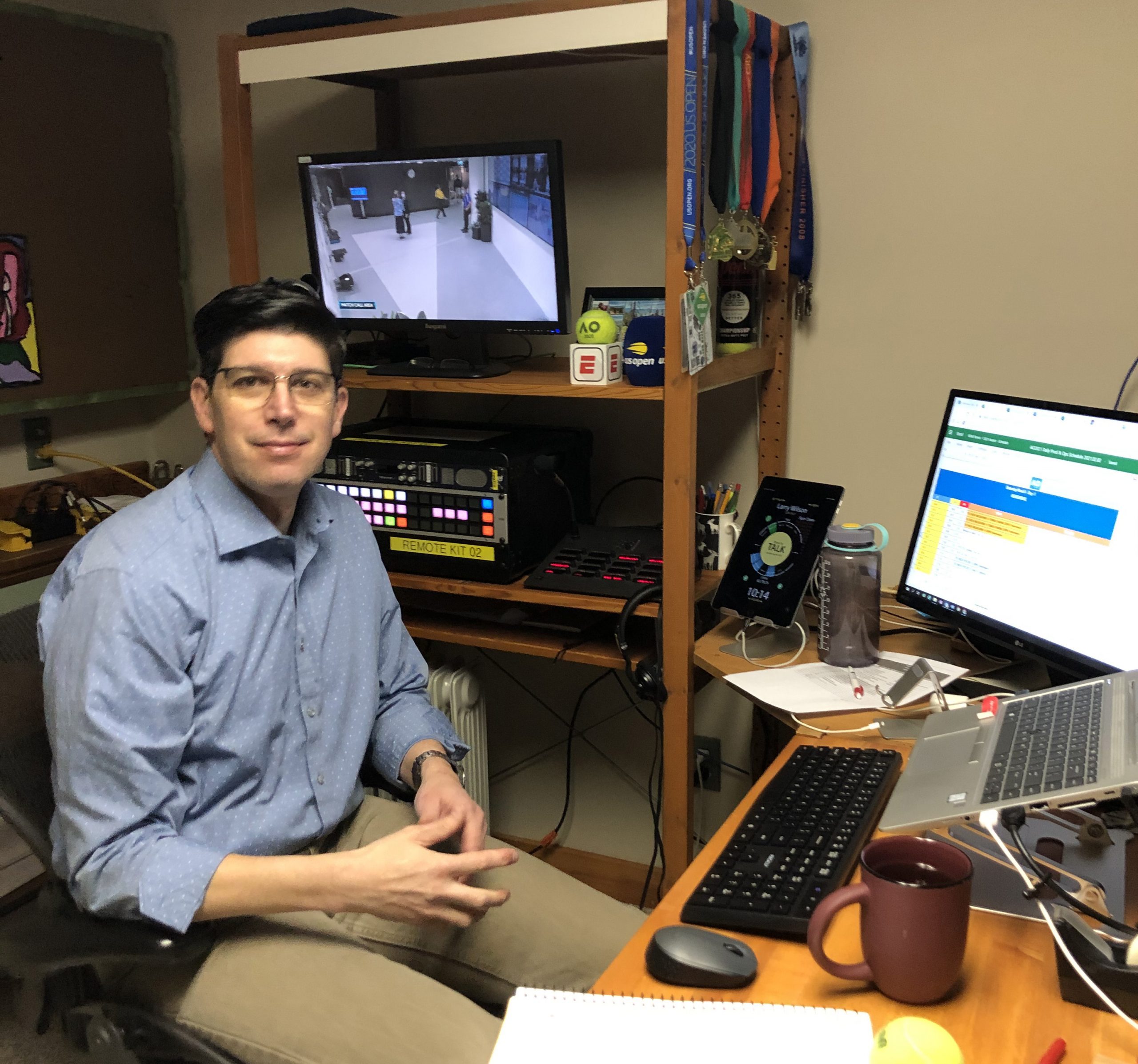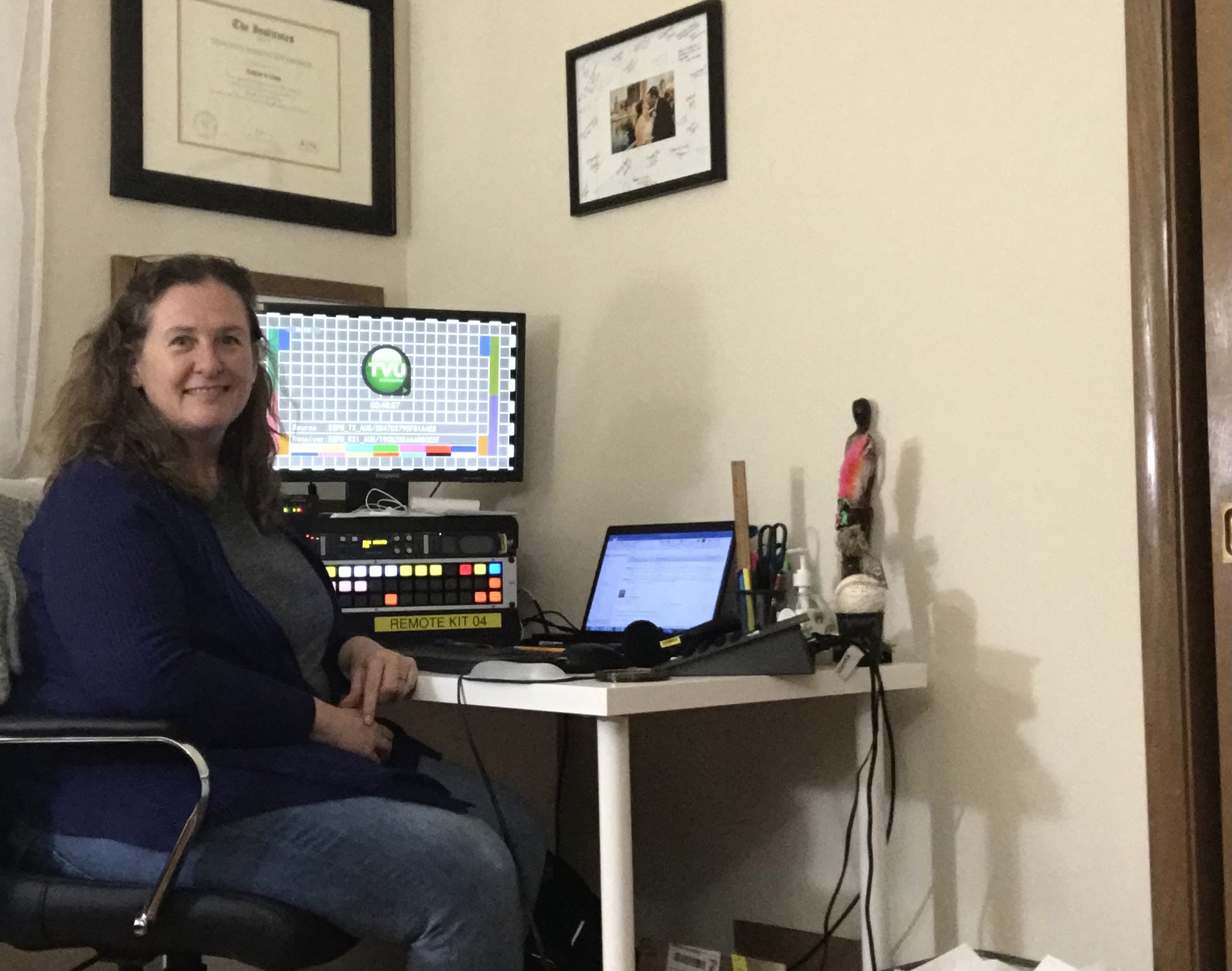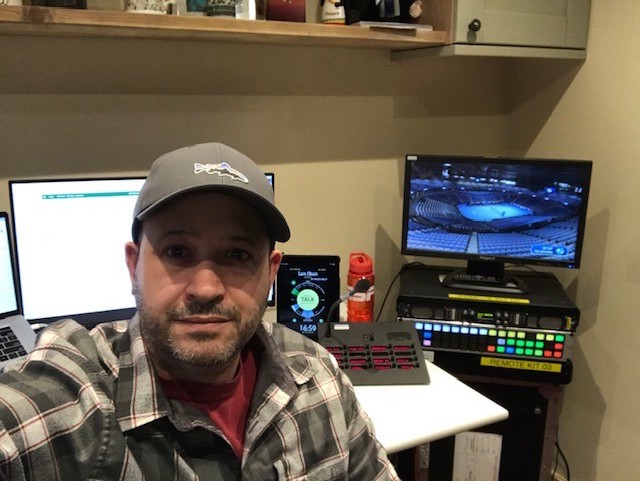In the Face of the Pandemic, ESPN Relocates Australian Open Production Ops to Bristol
40+ paths, nearly 100 sources come from Melbourne for massive REMI effort
Story Highlights
The ongoing global pandemic rendered the annual pilgrimage of ESPN’s production and remote-operations teams to Melbourne for the Australian Open unrealistic, if not impossible, this year. However, not to be deterred, ESPN has shifted its sizable production operations more than 10,000 miles away to its Bristol, CT, headquarters, where it is remotely producing 110+ hours of live Aussie Open TV coverage (plus another 1,000+ hours of live-streamed content).
“Everything is different and unique for us this year, being in Bristol,” says ESPN VP, Production, Jamie Reynolds. “I think that has been incentivizing for a lot of people to try to reinvent the way we cover Grand Slam tennis. The excitement of having all the technology and toys to play with in Bristol is attractive. So I think it has rejuvenated the way we tell stories and approach how we handle a world feed like this. That has been an exciting, inspirational way to approach it.”
In Melbourne: Limited Onsite Presence, Reliance on the World Feed
Because of travel restrictions and safety precautions, ESPN has a minimal presence onsite in Melbourne, with only analysts Darren Cahill and Rennae Stubbs reporting live from the grounds (both are Australian natives and are also serving as coaches at the tournament). In terms of match coverage, ESPN is relying even more heavily than usual on the world feed provided by host broadcaster Tennis Australia and its technical partner, Gravity Media.
When Bristol meets Melbourne. Hello ESPN team 😉 Welcome to the @AustralianOpen pic.twitter.com/dtE4VX5QRL
— Darren Cahill (@darren_cahill) February 7, 2021
In addition, ESPN is sending 40 paths from Melbourne to Bristol via a 1.5-Gbps fiber link provided by The Switch (with access to nearly 100 video sources in total). ESPN is also receiving clean and dirty feeds of the linear program produced by Tennis Australia. ESPN-owned encoders are deployed in Melbourne, are managed onsite by Gravity Media, and can also be controlled from Bristol.
“Historically,” says Reynolds, “we would send only three lines back from Melbourne with our switched feed, so we did all the work onsite. This year, we have 40 [to Bristol], so it becomes a lot more complicated.”
The backbone of ESPN’s Australian Open broadcasts are the clean and dirty feeds from all 16 broadcast courts (eight produced with traditional manned cameras, eight with automated robotic camera systems). On Center Court at Rod Laver Arena, ESPN is taking the line cut from Tennis Australia and five additional camera feeds that the ESPN production team can intercut at its discretion.
look 👀 at old school 🏫 pic they have of me at espn i think 🤔 either 83 or 84 indoors in australia 🇦🇺 the bandanna i guess for fashion back in the day pic.twitter.com/KFkFdRsDXF
— Brad Gilbert (@bgtennisnation) February 9, 2021
“We wanted to be able to give our production counterparts the flexibility to go to individual courts and not have to rely entirely on the produced world feed from Tennis Australia,” says ESPN Associate Director, Operations, Larry Wilson. “We have 16 dirty feeds and 16 clean feeds coming back so that they can create their own ESPN production by going court to court based on their editorial discretion.”
ESPN must also account for frame-rate conversion since the Tennis Channel Australia host broadcast is a PAL 50-Hz feed. To convert the 40 paths to NTSC 60-Hz signals, ESPN is using 20 frame-rate converters in Bristol and another 20 on the West Coast at Tennis Channel. ESPN and Tennis Channel then exchange paths as needed.
All these signals are integrated not only into the ESPN Domestic broadcast but also into Tennis Channel’s coverage, by ESPN International clients, and into ESPN Interactive TV’s multiscreen mosaic on AT&T DirecTV, which is also being produced in Bristol.
The complex transcontinental remote operations are overseen by Wilson in Connecticut, Senior Operations Producer Joa O’Connor in Wisconsin, and Technical Manager Sam Olsen in London — all from their respective homes. To manage the 40+ paths running between Melbourne and Bristol, they are using a mix of Unity comms software, Gravity Media Kits that allow them to view the routers in Melbourne, email, cellphone, Zoom, and WhatsApp.
“We’re learning as we go because we have never really done this workflow before,” says Wilson. “It’s not extremely complicated in theory, but the execution is unique because it’s just three of us managing it from our homes. We’ve lost that ability to walk around and get a sense of how things are going. That’s what complicates the management part of it.
“I’m immensely proud of the team and how we were able to visualize a workflow that we can’t really put our hands on,” he continues. “We haven’t seen each other in person to do any planning either, so everything has been remote. It’s quite a challenge to try to visualize the plan over Zoom calls and line drawings and emails, but we’re very happy with how it has turned out.”
In Bristol: Control Rooms, Studios, Commentary
In November, ESPN’s tennis team took Bristol’s studios for a “test drive,” as Reynolds calls it, during coverage of the ATP championship.
What? Miss a #BartyParty? @espn 🎾 @AustralianOpen live from Bristol studio. #upallnight
My proof. pic.twitter.com/7xZoIgSGEc— Chris McKendry (@ChrisMcKendry) February 9, 2021
“It was only one match in a two-hour window every afternoon, but it worked pretty darn well,” he says. “It looked great having talent [Chris] McKendry and Patrick [McEnroe] and Brad [Gilbert] here in the studio together with all the bells and whistles it offers. It gives the whole production flow a different texture and character, and we were really happy with it. So we decided, if we can do it with one court, why don’t we do it with 16 halfway around the world.”
For the Australian Open coverage, ESPN is operating two discrete control rooms in Bristol for its domestic broadcast and the ESPN ITV/DirecTV multiscreen experience, respectively. Both control rooms — along with all of ESPN’s Aussie Open operation in Bristol — are observing strict safety protocols to ensure the health of the crew. In addition, Reynolds says, the majority of ESPN’s usual producer/director teams are at the front bench in Bristol.
“We’re fortunate in that we have a great group that has produced and directed all the majors for us and they are here,” says Reynolds. “The added benefit is that we’ve got a lot of really smart folks from the studio side of the house that know how Bristol operates and can teach those of us who do a lot of business on the road how to work effectively and efficiently in Bristol.”
ESPN dedicates one of the larger Bristol studios to the domestic broadcast each day from 7 p.m. to 7 a.m. ET. The studio features a large socially distanced three-person desk, a telestration/touchscreen station, and two satellite desk setups.
“Historically, we’ve always separated people around the grounds,” says Reynolds. “We now have the ability to put a lot of our personalities together in the studio in primetime, which we’re really excited about.”
After many years of @AustralianOpen Down Under, our ESPN tennis team instead is gathered at the Mother Ship for remote coverage starting Sunday 7ET with @naomiosaka followed by @serenawilliams opener about 9ET. @DjokerNole debut approx 5am ET Monday pic.twitter.com/XC1S8964hr
— Chris Fowler (@cbfowler) February 7, 2021
Meanwhile, the ESPN ITV operation is utilizing the same studio used for the ATP Final and has two dedicated on-air talent. The network is also cycling through several personalities from its domestic coverage for the DirecTV mosaic, which runs 7 p.m. to 3 a.m. ET during the first week of the tournament.
The majority of ESPN announcers are calling the action from three dedicated off-tube commentary booths in Bristol. In addition, the network has deployed three of its Live From Home commentary systems for James Blake in San Diego, Cliff Drysdale in Austin, and John McEnroe in New York.
“More often than not, [announcers] don’t get the Wimbledon courtside bunker or 200-level suite at Ashe Stadium. Due to the volume of courts, tennis has always been heavily reliant on calling action off of monitors because you’re always bouncing between courts,” says Reynolds. “So, this isn’t different or strange for any of them. It’s part of our normal operation; they’re just not on the grounds.”
With four days of tennis already in the can, Reynolds says he’s just excited to be delivering Grand Slam tennis again — especially with fans in the stands.
“The most exciting aspect in terms of [onsite] energy is the fact that the Victorian government and Tennis Australia are allowing [a limited number of] fans to attend,” he says. “That changes the entire dynamic compared to what we were dealing with New York [for the US Open]. You’ve actually got foot traffic, people in the stands, and a natural atmosphere in the arenas. That’s clearly a game-changer and a sign of a modest recovery for the country. We’re excited for a great atmosphere and energy, and we hope to take advantage of it.”



